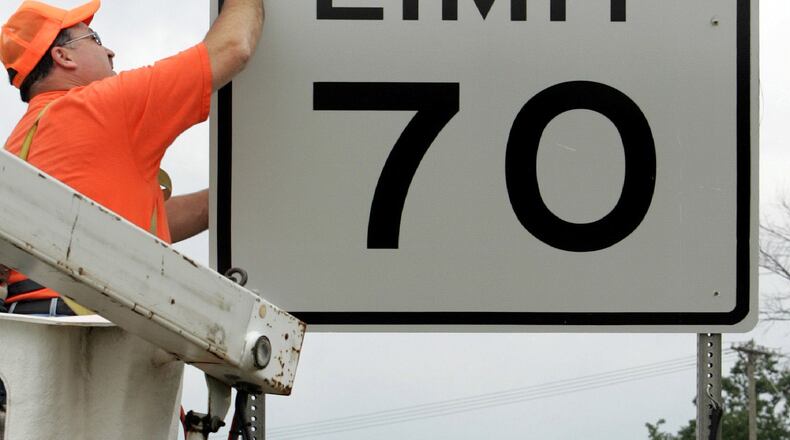Potential speed limits
The state transportation budget bill calls for changes in highway speed limits:
70 mph on all interstates outside of urban areas
65 mph on urban outerbelts
60 mph on all two-lane state highways outside of municipalities
55 mph on interstates in congested areas
Source: Ohio Legislative Service Commission
Faster speed limits on most Ohio highways advanced one step on Wednesday when the Ohio Senate gave its approval to the final compromise version of the transportation budget bill. The House is expected to do the same Thursday.
Motorists would be allowed to drive 70 miles per hour on interstates outside urban areas, 65 on urban outer belts, 60 on all two-lane state highways outside city limits and 55 on interstates in congested areas, according to the latest version of the bill.
Gov. John Kasich has not said publicly whether he supports higher speed limits. Because House Bill 51 is a budget bill, the governor has the power to veto line-items in the legislation without killing the entire bill.
The 70-mph speed limit is popular with the lead-footed driving public but not so much with insurance companies and environmental groups that say it increases risk.
“This may shave a few minutes of travel time, but it’ll come at the expense of dirtier air and more dangerous roads. It is hardly worth the trade-off,” said Jack Shaner of the Ohio Environmental Council.
Ohio Insurance Institute President Dan Kelso said, “The faster you drive, the higher the risk. Whether you’re on a rural or urban highway, it takes longer to stop.”
In past years when lawmakers floated the higher speed limit, law enforcement groups have opposed the idea. This time around, though, the Ohio Highway Patrol and other police associations were quiet.
The $3.87 billion transportation budget bill’s other provisions: motorists who are late registering their vehicles will face a $10 fine after a 30-day grace period, down from a $20 fine after a seven-day grace period; businesses will be allowed to apply for specialty license plates with their company logos on them; and the state is authorized to issue $1.5 billion in bonds against future Ohio Turnpike tolls, but 90 percent of the bond revenues will have to be spent within 75 miles of the turnpike.
The final version of the bill does not include a provision to increase truck weight limits, which was opposed by insurance groups and county engineers.
Ric Oxender, lobbyist for the Ohio Conference of AAA Clubs, said, “People are going to drive 76 or 77 mph now. The good news is (lawmakers) didn’t increase the truck weights, too. If they had, it would have been a recipe for slaughter.”
About the Author


